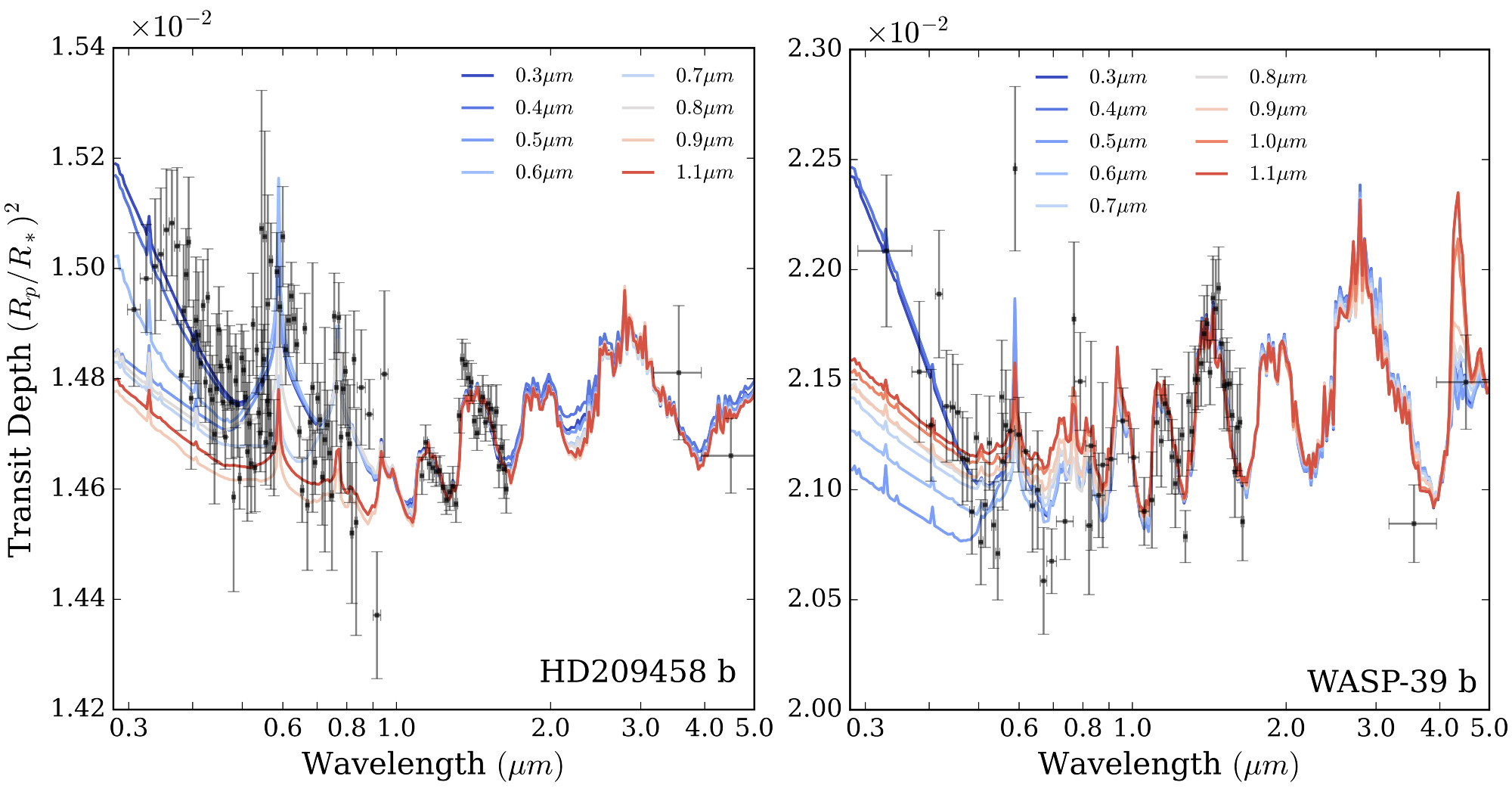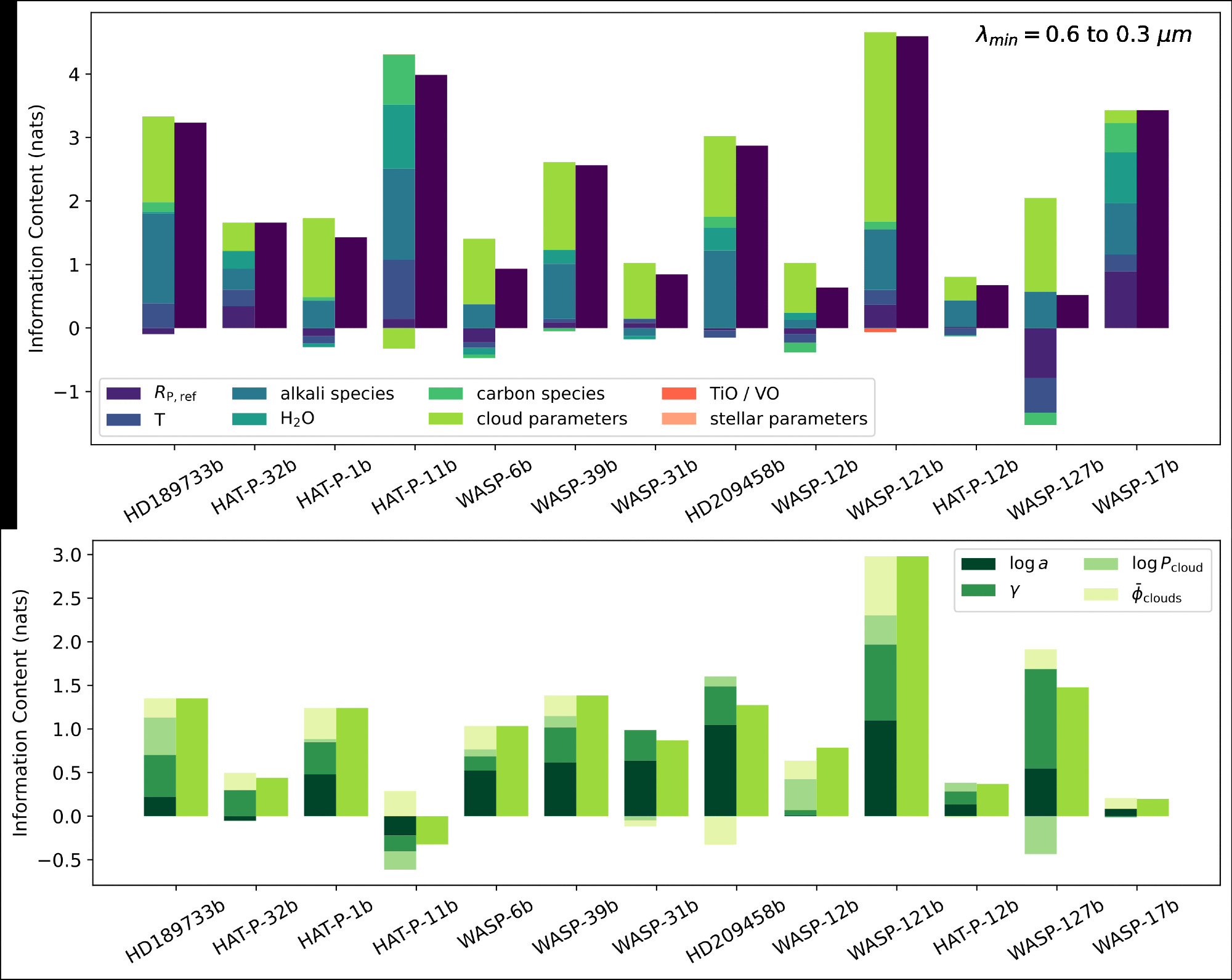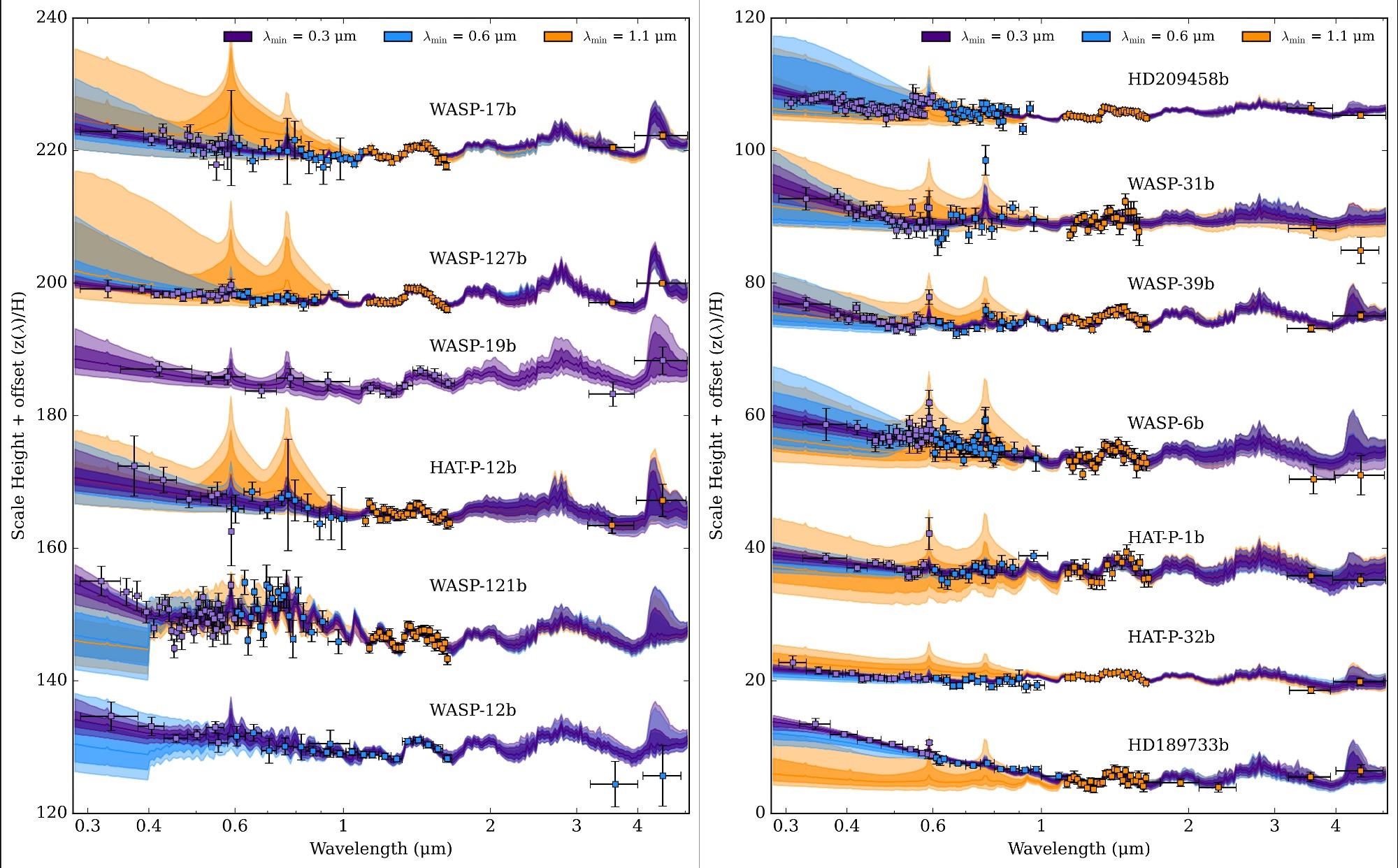
The main take away You cannot use IR data to easily predict the UV/optical spectrum of an #exoplanet predominantly due to the presence of clouds in the atmosphere which cause additional absorption that has less impact on long wavelength data. @NASAHubble is key!

We looked at the results from our models as a population but find no clear linear trends in cloudiness of the atmosphere with temperature or amount of water vapour, however, more complex trends are likely. We do show that the model determined temperature is similar to GCMs!

We show that the inclusion of data below 0.6 microns (@nasawebb-mirror.bsky.social#exoplanets atmosphere and that near-IR data alone is a poor predictor of the UV/optical spectrum measurable by @NASAHubble - associated with☁️

To assess changes to the measured parameters from one model fit to the next containing more data we compute the change in Information Content - a metric to define the increase in information you have with the new model. Higher number == more information gained with new model

We took 14 #exoplanet@distantworlds.space ) to ask the question: "what information do I gain as I add in more optical data?" to demonstrate the need for @NASAHubble UV/optical measurements

Excited to share the latest paper from our Exoplanet Timeseries Characterisation (ExoTiC) team here at Bristol, this time led by (then MSc now PhD student) Charlotte Fairman 🥳 on The Importance of Optical Wavelength Data on Atmospheric Retrievals of Exoplanet Transmission Spectra from Hubble

Exoplanet transmission spectra provide rich information about the chemical composition, clouds and temperature structure of exoplanet atmospheres. Most exoplanet transmission spectra only span...
Hijacking my call for astronomers tut tut 🤨
Lectureship in Scientific Computing @BristolUniPhys👩💻👩🏻🏫 - the field of study is completely open but people working in Planetary & Astrophysics computation align well! Deadline Feb 4th Do reach out if interested or contact Dr Simon Hanna who is leading the recruitment with Qs 🤓 Join us @BristolUni
Yay congratulations! ☺️🥂
I had an amazing time @cosmicshambles.com#NineLessons#exoplanet mineral clouds ☁️ I was too nervous to take any pictures but we had a fantastic cast it was a pleasure and privilege to be involved ☺️🤓
